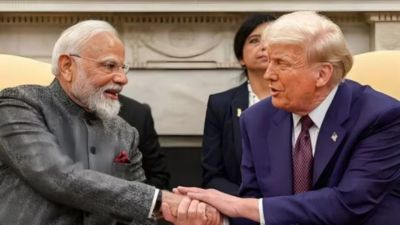Stay updated with the latest - Click here to follow us on Instagram
Breaking down news: The inheritance of Independence
The crushing disappointment of the prime minister's address on Independence day was salvaged by an AIB video that ripped on the past, present and future.
 In this frame grab taken from video provided by the Syrian anti-government activist group Aleppo Media Center (AMC), a child sits in an ambulance after being pulled out or a building hit by an airstirke, in Aleppo, Syria, Wednesday, Aug. 17, 2016. Syrian opposition activists reported an airstrikes on the al-Qaterji neighborhood in Aleppo late Wednesday. (Aleppo Media Center via AP)
In this frame grab taken from video provided by the Syrian anti-government activist group Aleppo Media Center (AMC), a child sits in an ambulance after being pulled out or a building hit by an airstirke, in Aleppo, Syria, Wednesday, Aug. 17, 2016. Syrian opposition activists reported an airstrikes on the al-Qaterji neighborhood in Aleppo late Wednesday. (Aleppo Media Center via AP)
One year ago, the world was moved to tears, to action, to loathing and self-loathing by pictures of the drowned Syrian child Alan Kurdi, snapped on a Mediterranean beach by Nilüfer Demir. Time, the great healer, brings the boon of forgetfulness and these days, refugees in the Med must go down for the third time by the boatload to merit editorial attention. But before that image of the three-year-old boy, which influenced all sorts of human artefacts from Canadian elections to installation art, could altogether cease to trouble the world’s conscience, another Syrian child, rescued from an apartment block following an airstrike by night, has become the face of Aleppo.
It is a haunting, bloodstained face, with one eye slightly narrower than the other, and both trained on the camera without the slightest sign of surprise or alarm at the grievous injury that the child has clearly suffered. He is unnervingly calm and silent. He should be crying in terror. The contrast is chilling, and it has turned “the boy in the ambulance”, as he has come to be known on social media, into the face of Aleppo. Russia’s support for a 48-hour ceasefire in the city is being attributed to diplomatic lobbying, but the moral pressure that this image is exerting on the world cannot be underrated.
The acerbic media debate which had followed the death of Alan Kurdi will now be reprised, no doubt. Is this war porn? Of course it is. But why is that a problem? Does it matter if it makes some people feel moved and pious, so long as it moves other people to action? Russian support for a 48-hour ceasefire in Aleppo is being attributed to diplomacy, but this image may have exerted moral pressure, too.
Here in south Asia, it’s the Independence season. The Pakistan Association of Hong Kong has invited global scorn by attributing the words, “Float like a butterfly, sting like a bee,” to Muhammad Ali Jinnah, on a banner in the national colours. And AIB lightened the air with a sweet rip job on the past, present and future, in a skit in which India appears for an exit interview from Great Britain (who closes it by getting familiar: “Just call me Raj.”) A freshly emancipated India vows never to divide and conquer by caste or religion, never to imprison students who criticise it, never to muzzle the press, along with many other unkept and unkempt promises, but laughs that with Article 377, there was finally something that the myriad faiths of India could agree on.
In comparison, the prime minister’s address from the ramparts of Delhi’s great Mughal fort, red with embarrassment at the excesses and harangues it has been forced to eavesdrop on for centuries, was fairly pedestrian, a curriculum vitae of the government. Sure, there were dispassionate references to divisive politics, but would they have featured if the president had not brought up the matter in his own address? And the promise to memorialise tribal rebellions past? Would that have featured if the poster for the Dalit meet at Una (which competed with the PM’s address for airtime and lost; only NDTV had good coverage) had not gone viral: “On August 15 you
[the PM] will address the nation from the Red Fort and sing a song of development, but you will not mention the blood, sweat and sacrifices of the dalits, tribals and labourers rooted in the foundation of this nation’s development”?
The latest research in communications suggests that we do not generally read what they share. A paper published via the French public research body Inria reports sharing behaviour using Twitter and bit.ly from an analysis of 2.8 million shares, trawled from a month’s worth of social media referrals to five major news organisations — BBC, CNN, Fox News, the New York Times and Huffington Post. Nothing new there — research on sharing is old hat and has generated glorious pontification on digital information flows which influence all sorts of fine things, from Arab Spring to Shah Rukh Khan’s interest in catching Pokemon in US airports he’s detained in. But here, the authors also looked at clickthroughs associated with the shares, and after doing battle with methodology and error correction, concluded that from half to three quarters of people share news without reading it.
The implication is that a vast number of your followers are sharing your balderdash only because they support you, while remaining perfectly ignorant about said balderdash. It’s nice to be liked but given that social media referrals have accounted for most of news website traffic since 2014, the phenomenon produces a sinking feeling, too. It’s sometimes claimed that democratic choice is being driven most forcefully by the energy of ignorant trolls. Good heavens, it could be true!







